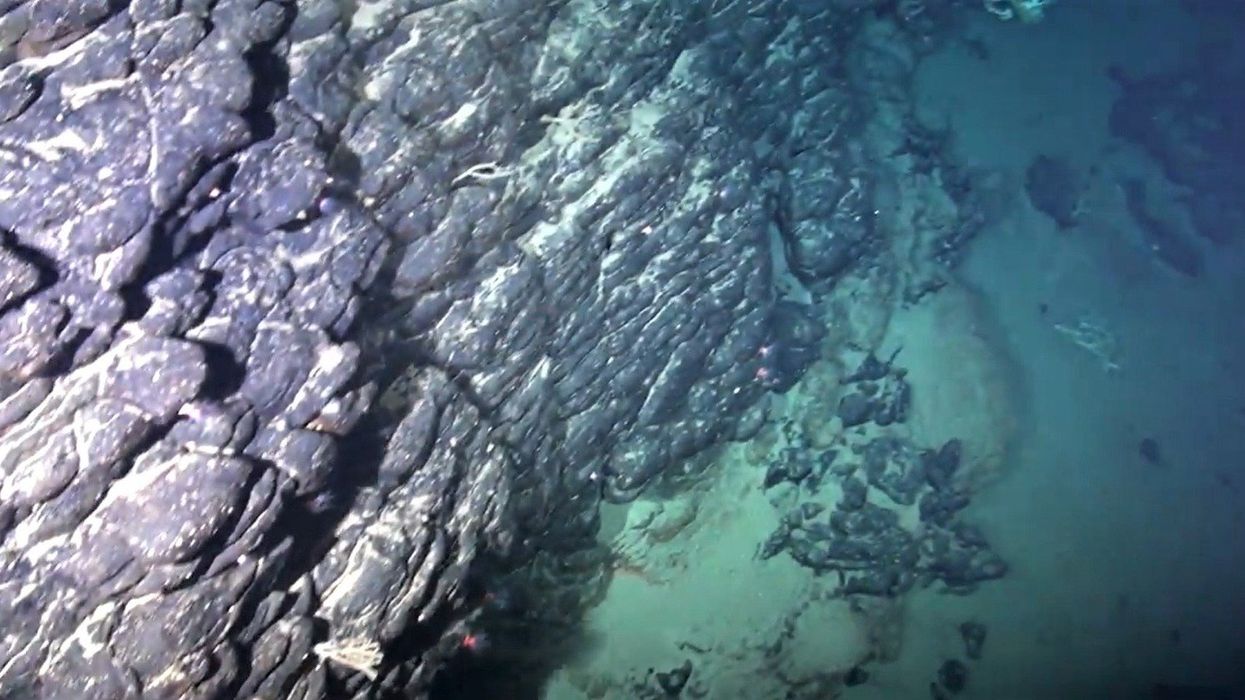Science & Tech
Harriet Brewis
Mar 17, 2024

The Brazilian government is now hoping to lay claim to the island's riches
(Researchers’ archive via Agencia FAPESP)
A long-lost tropical island has been discovered off the coast of Brazil which may be a treasure trove of precious minerals.
The island was first chanced upon In 2018, when Brazilian and British scientists were exploring the seafloor around a volcanic plateau known as the Rio Grande Rise.
Spotting some unusual rocks around 2,100 feet (650 metres) below the surface of the water, they realised that these were layers of red clay.
"You just don't find red clay on the seabed," Bramley Murton, a marine geologist who was on the expedition, explained to Eos.
"The deposits looked like tropical soils.”
However, it wasn’t until late last year that Murton and his colleagues were able to prove that the sunken landmass was once a bonafide island.
"Imagine a lush tropical island slipping beneath the waves and lying frozen in time. That's what we've uncovered," Murton said.
He and his team wrote in a study, released in November 2023, that the island would have been a similar size to Iceland – around a fifth of the Rio Grande Rise's total area.
Their research, published in the journal Scientific Reports, showed that the clay’s distinctive mineral makeup could only have been formed by open-air weathering in tropical heat and humidity.
It is the latest in a series of discoveries that suggest the Rio Grande Rise, which lies 1,200 kilometres (750 miles) off of Brazil’s coast, was once a large landmass covered with vegetation.

The origins of the Rio Grande Rise can be traced back 80 million years, when an enormous mantle plume beneath the South Atlantic's mid-ocean ridge caused a burst of intense volcanism.
The resulting rise "started life as a Cretaceous version of Iceland" closer to the mid-ocean ridge than what is now South America, Murton told Eos.
Then, gradually, as volcanic activity subdued, the volcanic plateau drifted westwards across the Atlantic and sank beneath the waves.
However, some 40 million later, the mantle plume erupted with further volcanism in the western portion of the rise.
It is in this area that the scientists found the red clays, sandwiched between lavas known to be some 45 million years old.
Analysing the properties of the sediment, authors found that this red clay matches the characteristic “red earth” (terra roxa) found in many parts of São Paulo.
Furthermore, within the soil, the team detected numerous minerals that are typical of volcanic rock alterations, including oxidised magnetite, hematite, goethite, and kaolinite, IFL Sciencereports.
These combined findings indicate that the clay had formed as a result of intense chemical weathering of volcanic rocks in a warm, wet climate with active volcanoes.
“Our research and analysis enabled us to determine that it was indeed an island,” marine geologist Luigi Jovane, one of the study’s coathors, said in a statement.
“Geologically speaking, we discovered that the clay was formed after the last volcanic activity occurred 45 million years ago. The formation therefore dates from between 30 million and 40 million years ago.
"And it must have been formed as a result of these tropical conditions.”
Fenda Cruzeiro do Sul, um cânion que corta a Elevação do Rio Grandewww.youtube.com
Earlier research has also shown that the submerged island is rich in valuable minerals, including cobalt, lithium, and nickel, as well as highly-prized rare earth elements like tellurium.
These materials are key to the technologies that aim to lead the world away from fossil fuels so, understandably, people are pretty interested in the prospect of extracting them.
For this reason, in December 2018, the Brazilian government applied to the United Nations to extend its maritime borders to include the Rio Grande Rise.
However, the rise is currently located in international waters and is far outside Brazil’s 370-kilometre-wide exclusive economic zone – which provides coastal nations with sovereignty over seabed resources.
To qualify for an extension, Brazil needs to prove that the rise has the same geological characteristics as its nation.
Fortunately for the country, Jovane, Murton and their colleagues may have helped to significantly bolster their claim.
“The Rio Grande Rise and the continent have the same soil and climate,” Jovane confirmed. “In that sense there is a direct relationship between the two.”
Nevertheless, he stressed that the South American country not only needs to prove the legitimacy of its claim to the Rio Grande Rise but also that it can mine the area sustainably.
For now, Brazil only has the authority to mine on land, and there is still no legislation for seabed mining in international waters.
“To know whether resources can be viably extracted from the seafloor, we need to analyze the sustainability and impacts of this extraction,” Jovane insisted.
“When you interfere with an area, you have to know how this will affect animals, fungi and corals, and understand the impact you’ll have on the cumulative processes involved."
Sign up for our free Indy100 weekly newsletter
Have your say in our news democracy. Click the upvote icon at the top of the page to help raise this article through the indy100 rankings
Top 100
The Conversation (0)













